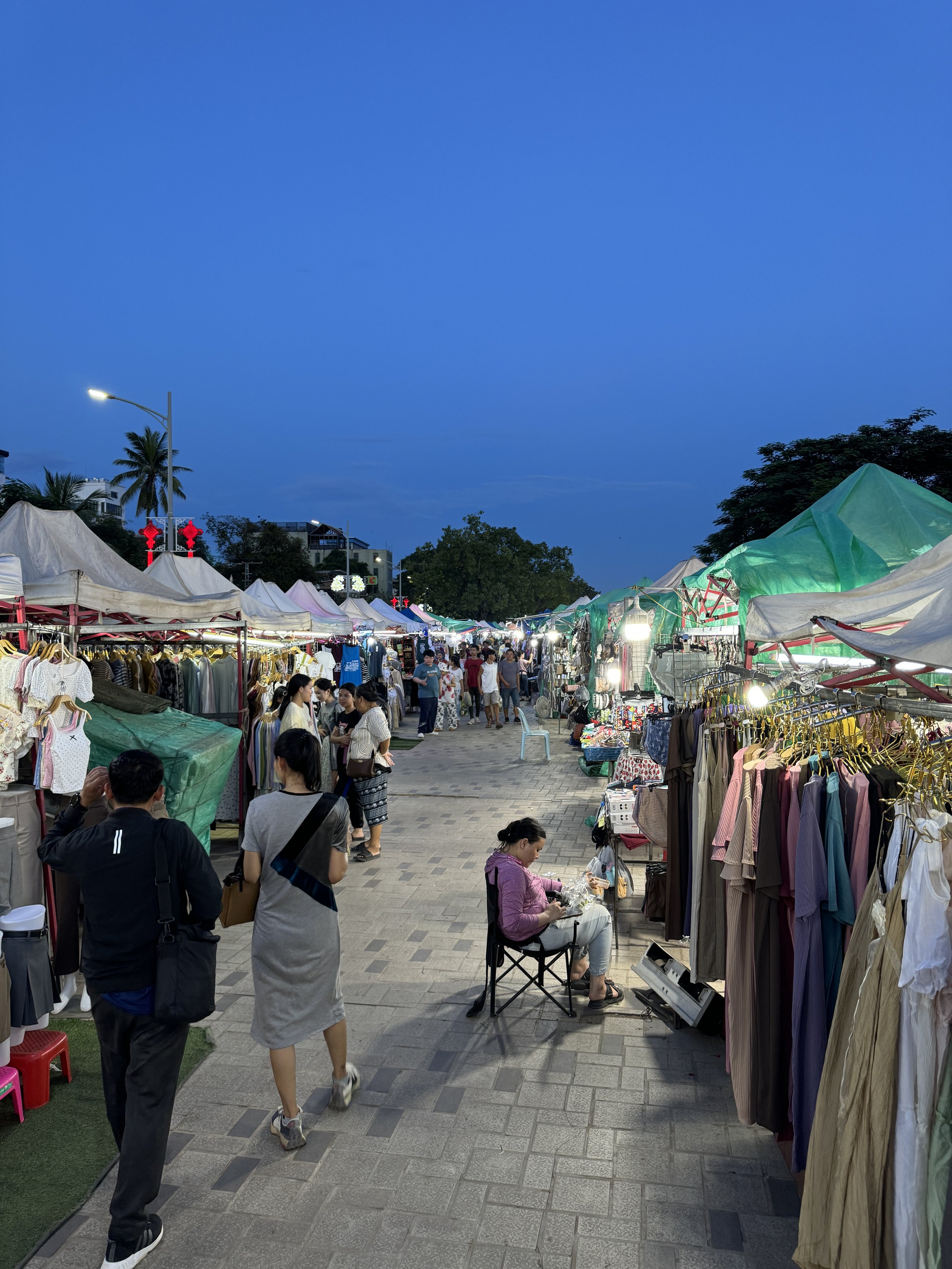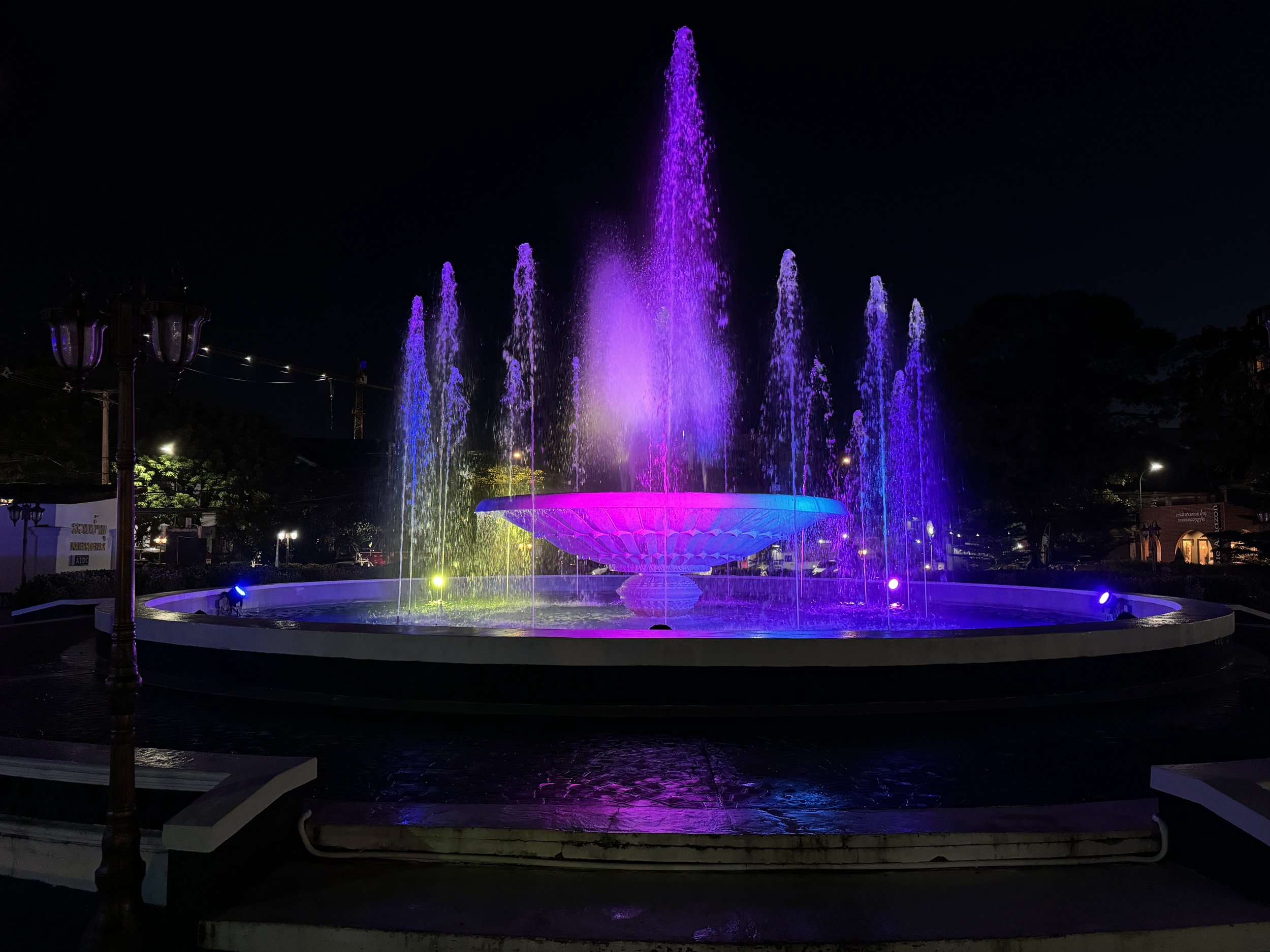July 16
Traveling to Vientiane
My entry into Laos was at Pakse. I figured that it would be better to enter Laos and provide my Visa documentation at a small airport so that I wouldn’t have to stand in hours-long queues, like I have done in the past. That’s especially true in underdeveloped countries like China and France, where I have spent excruciatingly long times in immigration lines.
I ended up correct about my assumption about Pakse. Immigration was a breeze, especially since there were so few of us going through the process. It took maybe fifteen minutes from getting off the plane to being in the arrival hall. I think only one of my Singapore trips was faster.
My ride to Vientiane from Pakse. The flight was about an hour, versus an 8-10 hour bus ride. The bus is $20 cheaper…
View of the Mekong River as we’re landing in Vientiane. The bridge connects Laos at the top with Thailand at the bottom
Once again, a free snack pack with a red-bean filled sweet roll and bottle of water plus juice, tea, coffee on a 60 minute domestic flight. where the ticket was $40. Lao Airlines!
I shouldn’t have worried about flying into the largest airport in Laos. When our flight from Pakse landed at Wattay International Airport in Vientiane, our tiny airplane was literally the only airplane at the entire airport. I don’t know why Laos isn’t getting much love right now, but tourism is dead quiet.
Laos hasn’t jumped onto the Grab or Gojek bandwagon like most of the other countries in SE Asia, but they have their own version called Loca. So I hailed a rideshare through Loca, and twenty minutes later I was at my hotel, which just happens to be across the street from the corporate headquarters of Loca.
Not the fanciest of hotels, it’s actually a hybrid hotel/hostel. Some rooms have multiple bunks and guests share showers and restrooms down the hall.
No planes at all (other than mine) at the Vientiane airport
Other rooms, like mine, are traditional hotel rooms that have their own “en-suite” bathroom. The lobby doubles as a cafe and it is constantly busy, mainly with locals and presumably employees from Loca. They’re all busy drinking coffee, eating food, and typing computer code on their laptops.
So I went out into the 95 degree heat to seek out what Vientiane has to offer on a Saturday night. I found mainly a night market, which is massive. There are some pretty large night markets in Asia. I’ve been to the Ueno Ameyoko market in Tokyo and the Ratchada market in Bangkok, both of which seem huge. The Vientiane Night Market may actually be bigger. It’s over a kilometer in length, running along a large park that parallels the Mekong River. It has aisles of pop-up vendor tents along the whole length of it, filled with the standard items you see at almost all Asian night markets.
My hotel’s lobby is a cafe. It’s generally always busy, and the background music is a Taylor Swift playlist on repeat
In many ways , the interesting thing about night markets is that they’re not very interesting. If you’ve seen one, you pretty much have seen them all. There are basically five types of things being sold.
Clothes that are ridiculously inexpensive, and knock-off high-fashion brand clothes that are only slightly more expensive.
Handbags/Luggage that is ridiculously inexpensive, and knock-off high-fashion brand luggage and handbags that are only slightly more expensive
Souvenirs and knick-knacks from whatever the area the market happens to be located. Always a version of “I heart ….” T-shirts, keychains, magnets, pens, pencils, phone cases, etc.
Ridiculously cheap shoes, and knock-off brands like Nike and Adidas that are only slightly more expensive. Tell me if you’ve heard that before.
Super cheap electronics and knock-off Apple/Samsung items and cheap watches and knock-offs of every type of watch ever. In fact, in Cambodia and Laos I saw my first fake Casio F-91W watch. Which was selling for the same $10 that a real Casio F-91W watch costs. Huh?
The Vientiane Night Market
Speaking of knock-off Apple items, out of curiosity I ended up purchasing knock-offs of AirPods. I have seen them at night markets in every country I’ve visited now, so I was genuinely curious. How much did they cost? $10.
These fakes are an interesting blend of good and bad. They’re pretty much spot-on physically. Since I have an original, I compared. The case is maybe a couple of millimeters larger in all directions than the real one.
The good? Just like the original, they charge wirelessly and the setup when you open a new pair triggers the exact same setup/pairing wizard as the originals.
The bad? They don’t have noise cancelling, they don’t have the full touch controls on the stems, just a button to skip and pause, they don’t show battery life on the phone, and they sound pretty bad. They sound $10 bad, which probably means they aren’t a bad value.
A different type of fruit, knock-off Apple AirPods Pro. They’re a fascinating combination of good and bad.
After wandering around a bit at the market and finding some street food stalls to get dinner, I wandered back to the hotel. Along the way I accidentally ran into the Nam Phou fountain, which is one of the symbols of Vientiane. It was a pleasant and quiet find.
With more exploring of Vientiane to come the first day whetted my appetite to see what else Vientiane had to offer. I’ll tell you more as I find out.
Nam Phou Fountain. As has been typical on my journey, the park was empty and quiet.







